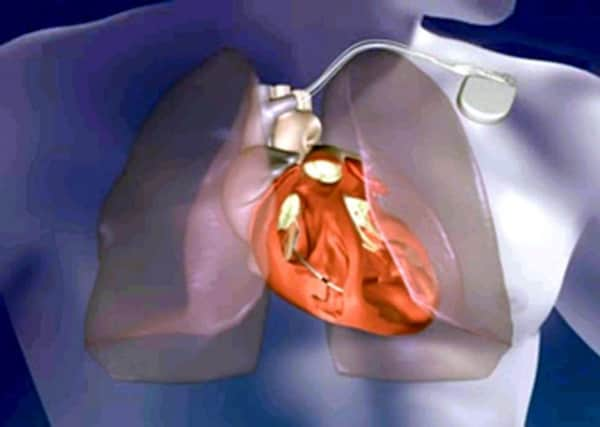First step towards a heart attack ‘alarm’


Scientists have identified two biomarkers whose levels drop dramatically within two weeks of a heart attack.
The discovery could lead to an early warning test that can tell heart patients, who show no outwards signs, when they are in danger, the researchers believe.
Advertisement
Hide AdAdvertisement
Hide AdIt may even be possible to create a heart attack “alarm” device that can be worn.
“Ultimately, our goal is to develop a test that predicts when a heart attack is going to occur in patients with heart disease,” said Dr Oxana Galenko, lead researcher at the Intermountain Medical Centre Heart Institute in Salt Lake City, Utah.
“This would help physicians intervene proactively and stop heart attacks from happening. There are monitors people wear that detect blood chemistry, and if we really wanted to look into the future, perhaps we could develop something similar,” Dr Galenko said.
Coronary heart disease is the UK’s single biggest killer, resulting in approximately 74,000 deaths a year, an average of 200 each day. In Scotland around 18,500 people die each year from the condition, with an estimated 620,000 suffering from heart disease north of the Border.
The biomarkers studied for the research are microRNAs, small strands of genetic material that are able to switch off genes by interfering with the way their codes are translated.
Two of them, labelled microRNA 122 and microRNA 126, seem to disappear from the blood before a heart attack.
The scientists believe that, when present, the microRNAs help to prevent heart attacks happening by blocking some unknown cardiac process.
Dr Galenko said: “MicroRNAs turn things off. Whatever they usually turn off in people with heart disease before a heart attack isn’t being turned off when microRNA levels are reduced, which may be causing something else to be activated.
Advertisement
Hide AdAdvertisement
Hide Ad“MicroRNAs act like a watchdog, and when their levels are reduced, heart disease takes a turn for the worse and heart attacks are likely to occur.”
The discovery, reported at an American College of Cardiology meeting in Washington DC, came after Dr Galenko’s team analysed data on 30 patients who had suffered a heart attack within 44 days of having blood samples taken.
The researchers looked at factors including age, gender, race, raised cholesterol, high blood pressure and diabetes.
But it was the changing levels of the microRNAs in the blood samples that stood out. Within two weeks of experiencing a heart attack, they plummeted.
RNA is a “cousin” of DNA and plays a crucial role in transferring the genetic code to protein-making machinery in cells.
Messenger RNA (mRNA) carries the code and ensures that a gene is “active”.
“We need to do additional research with more samples, but we’ve found a pattern that may help us understand the factors that lead to a heart attack, and we’ve developed a lot more questions that further research will help answer,” Dr Galenko added.